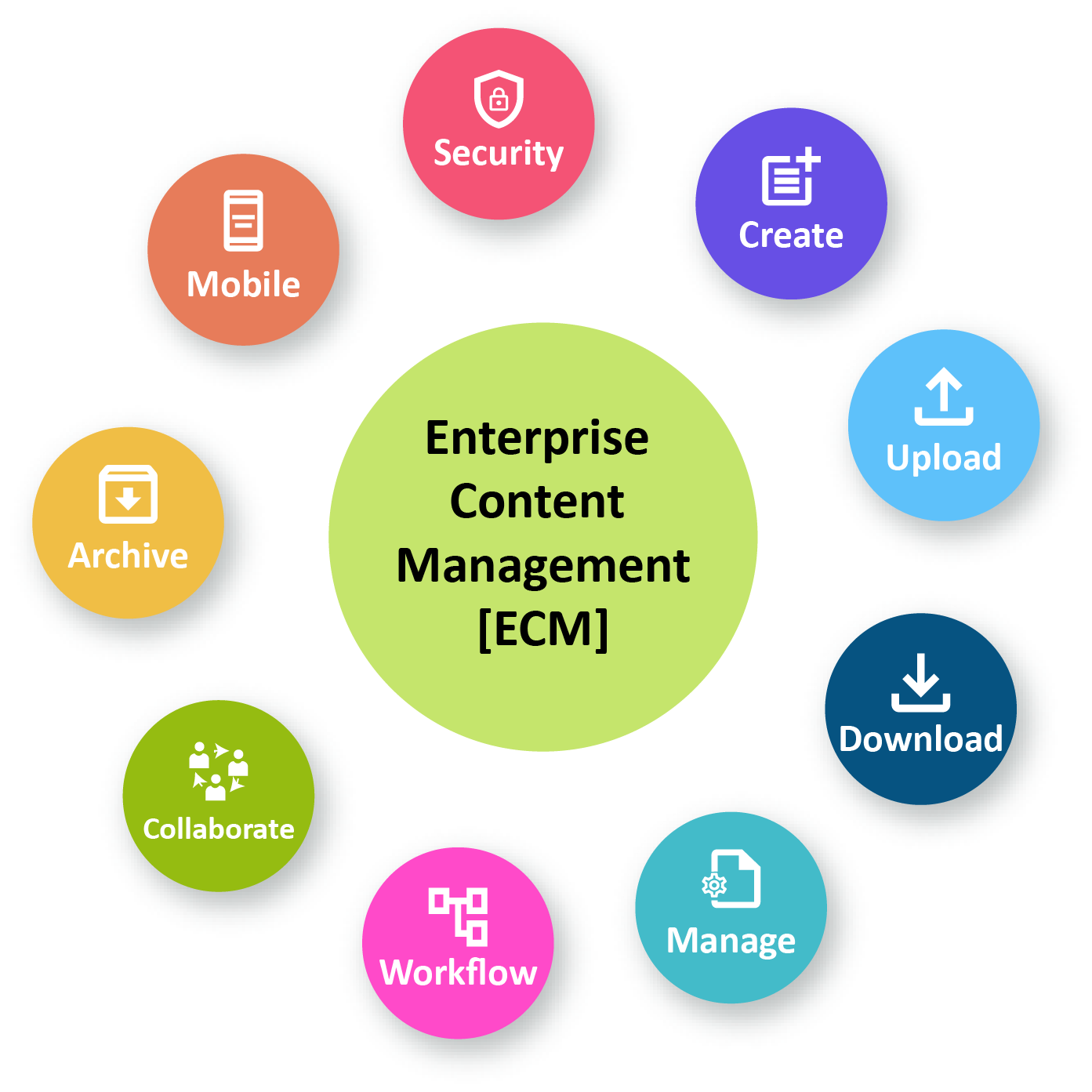Introduction to Enterprise Content Management (ECM)
Enterprise Content Management (ECM) is a strategic approach to managing an organization's documents, data, and digital content throughout its lifecycle. It encompasses the tools, methods, and strategies used to capture, store, manage, and deliver information in a way that supports business processes and organizational goals. ECM solutions are designed to streamline operations, enhance productivity, and ensure regulatory compliance through efficient content handling.
Core Components of ECM Systems
An effective ECM system comprises several key components, each aimed at simplifying content management and ensuring business continuity. These include document management, which focuses on storing and retrieving digital files; records management, which ensures long-term information archiving and regulatory compliance; and workflow management, which automates processes and approvals. Other essential elements are content capture tools, version control, and access permissions, all of which contribute to a centralized and secure content repository.
Benefits of Implementing ECM in Business
Implementing an ECM solution provides numerous advantages for organizations of all sizes. First, it promotes operational efficiency by reducing manual processes and enabling faster access to critical documents. Second, it enhances security by regulating who can view, edit, or share specific content. ECM also improves collaboration by offering shared access to documents in real time, supporting remote and hybrid work models. Additionally, it helps organizations stay compliant with industry regulations by maintaining a structured, traceable content system.
ECM and Workflow Automation
Workflow automation is a standout feature of modern ECM platforms. By automating routine tasks such as invoice processing, contract approvals, and onboarding documentation, ECM systems reduce human error and speed up response times. This automation allows businesses to reallocate human resources to more strategic functions, ultimately improving efficiency. Organizations also benefit from better visibility into their operations, thanks to audit trails and real-time dashboards that are integral to most ECM tools.
Enhancing Data Security and Compliance with ECM
Data security and regulatory compliance are two critical concerns for any organization handling sensitive information. ECM systems offer built-in features such as user authentication, role-based access, and encryption to protect against unauthorized access and data breaches. Additionally, document retention policies and automatic archiving features support compliance with data governance laws, such as GDPR or HIPAA. With ECM, companies can confidently manage their content while minimizing the risk of legal penalties or reputational damage.
ECM and Collaboration in the Digital Workplace
Today’s businesses rely heavily on digital collaboration, and ECM plays a key role in supporting this shift. By offering centralized content access, version tracking, and seamless integration with popular productivity tools, ECM systems allow teams to work more efficiently and collaboratively. Whether employees are working on-premise or remotely, ECM ensures that everyone has access to the most current information, reducing delays and improving decision-making.
Content Lifecycle Management through ECM
Managing the entire lifecycle of content—from creation and editing to storage and disposal—is a central purpose of ECM. Content lifecycle management helps organizations organize documents by relevance and retention requirements. With automated policies, outdated content can be archived or deleted based on compliance rules. This not only frees up digital storage but also ensures that critical information remains current and easy to access.
Cloud-Based ECM Solutions
As businesses increasingly migrate to cloud environments, cloud-based ECM systems are becoming the standard. These platforms offer scalability, lower maintenance costs, and the flexibility to access content from anywhere. Cloud ECM also ensures business continuity by offering regular backups and robust disaster recovery options. Furthermore, cloud integration simplifies updates and ensures compatibility with other business applications, providing a seamless digital ecosystem for content management.
Choosing the Right ECM Software
Selecting an ECM solution involves evaluating the specific needs of your organization. Important factors include ease of use, integration capabilities, customization options, and mobile accessibility. Organizations should also consider scalability, especially if they expect growth or plan to expand into new markets. A user-friendly interface, strong vendor support, and comprehensive training resources are also vital for a smooth ECM implementation and adoption process.
Read More - https://www.marketresearchfuture.com/reports/enterprise-content-management-market-3915
Conclusion: The Future of Enterprise Content Management
Enterprise Content Management is no longer a luxury but a necessity in the digital age. By enabling better control over business content, ECM systems drive efficiency, support compliance, and foster collaboration. As organizations continue to prioritize digital transformation, ECM will remain a critical tool for streamlining operations and achieving strategic objectives. Embracing ECM is not just about managing documents—it's about empowering businesses to operate smarter and faster in a rapidly evolving digital world.
